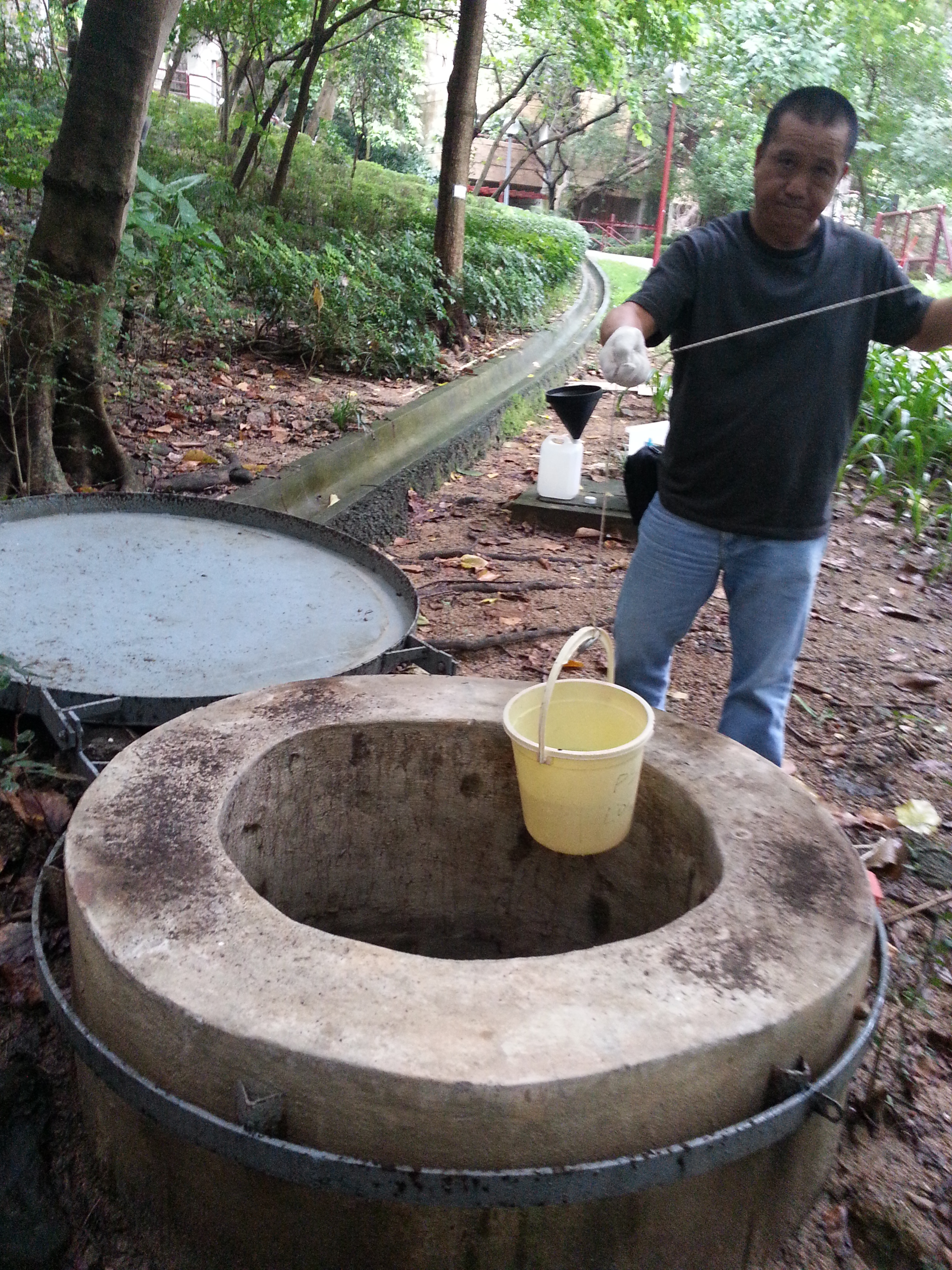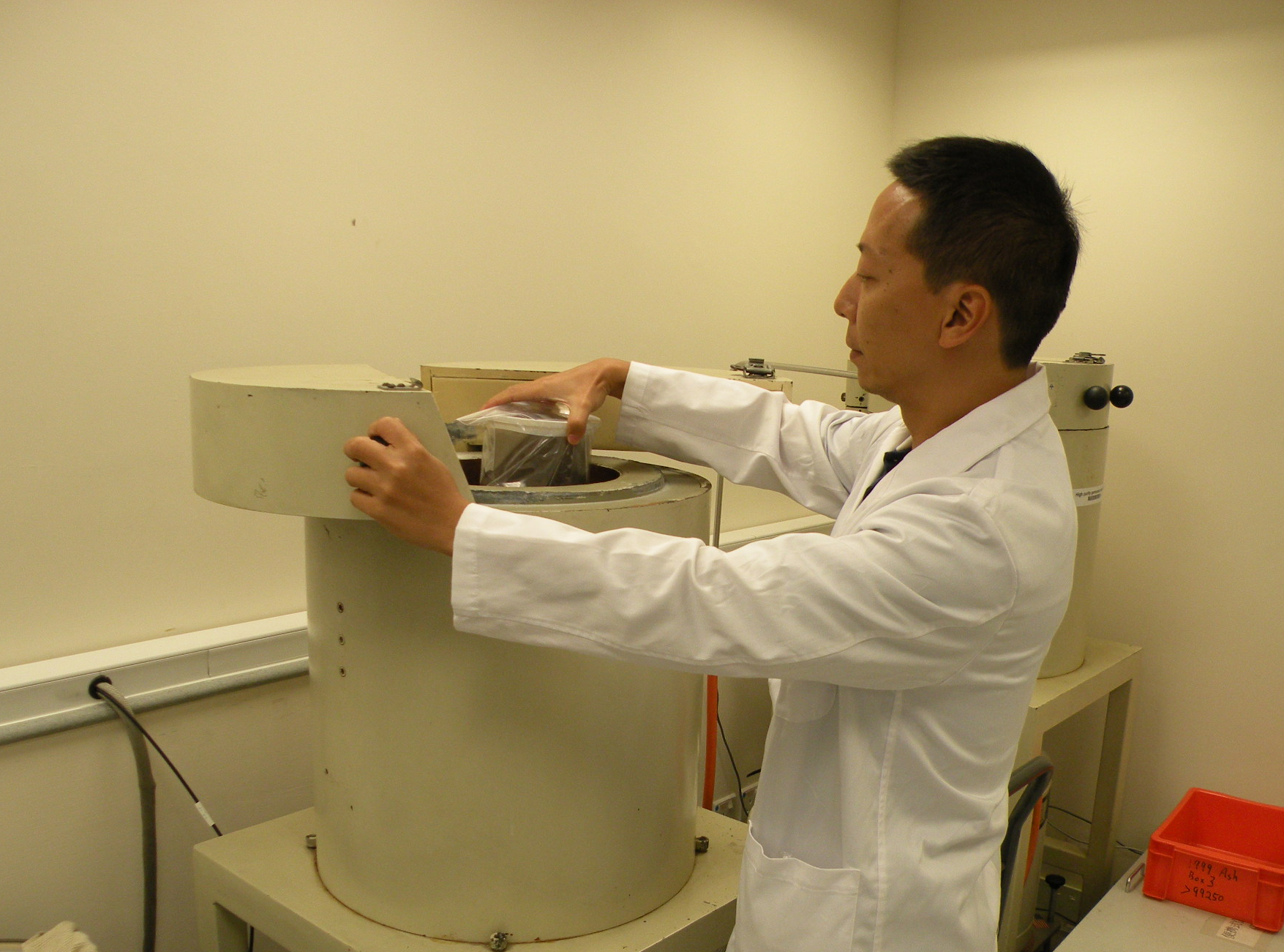Minimum Detectable Activity of Radiological Measurement of Environmental Samples
Minimum Detectable Activity of Radiological Measurement of Environmental Samples
LEE Shuk-ming
March 2020
Environmental Radiation Monitoring within Hong Kong territory
One of the responsibilities of the Hong Kong Observatory is to monitor and assess radiation levels in Hong Kong. We do this by monitoring the real-time ambient gamma radiation levels in Hong Kong through the radiation monitoring network. Furthermore, we also collect environmental samples of air, soil, water and food regularly over the territory and conduct radiological measurements of the samples in the laboratory.

Collecting underground water sample at Wan Tsui Estate in East Hong Kong Island
How are radiological measurements carried out in the laboratory?
Measurement of the activity of radionuclides in environmental samples is carried out in the King’s Park Radiation Laboratory. There are specific radiation measurement systems to analyse different radionuclides. For instance, gamma-emitting radionuclides are measured by gamma spectrometry system which consists of high purity germanium (HPGe) detectors.

Using an HPGe detector to measure gamma-emitting radionuclides in a sample
What is the meaning of minimum detectable activity of radiological measurements?
The minimum detectable activity (MDA) of a measurement is the lowest activity level that is practically detectable by the specific system for that measurement. If the activity in a sample is below MDA, the measuring system will not be able to detect it during that measurement.
What are the factors governing the MDA value?
The MDA value of a radiological measurement depends on a number of factors, including measuring instrument’s characteristics, method of measurement, sample characteristics and measurement condition. Therefore, MDA values vary with individual samples and measurements. Use of higher sensitivity equipment, Pre-treatment of samples to enrich the concentration of radionuclide, larger sample size or longer measuring time could help reduce the MDA of a radiological measurement (i.e. able to detect radionuclide with lower activity). However, longer measuring time will inevitably reduce measurement throughput and may also introduce more random errors due to noises of electrical measurement systems under prolonged operation.
How can we select an appropriate MDA for a radiological measurement?
When selecting an MDA for a radionuclide measurement of a sample, the Observatory always endeavors to adopt an MDA figure such that a measured activity of radionuclide close to the MDA would indicate very low activity of the radionuclide in the sample, implying no health risks.
For instance, we can look at the MDA of a gamma-emitting radionuclide Caesium-137 measurement of drinking water sample. According to the Daya Bay Contingency Plan, the Derived Intervention Level (DIL) of Caesium-137 in drinking water is 600 Bq/litre. The Observatory adopts an MDA of 0.1 Bq/litre in Caesium-137 measurement of water sample (Table 3 of the Summary of Environmental Radiation Monitoring in Hong Kong 2018), way lower than the DIL.
We have to understand that even with state-of-the-art instrument, there are always measuring uncertainties. With an MDA way below the DIL (by one or two orders of magnitude or more), the measured activity of radionuclide in a sample close to MDA can be basically regarded as no radiological consequences and no health risks.